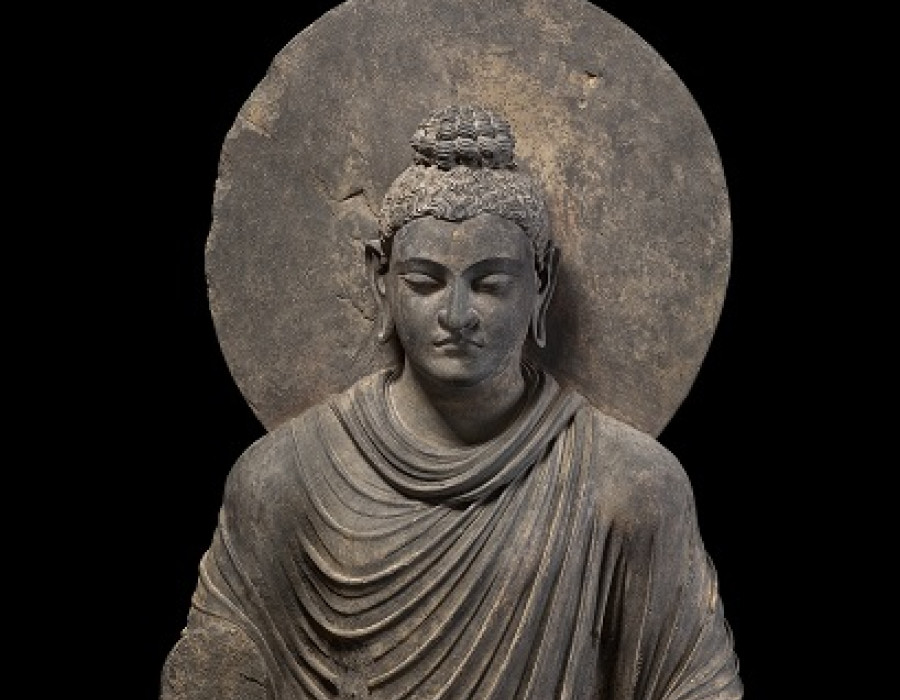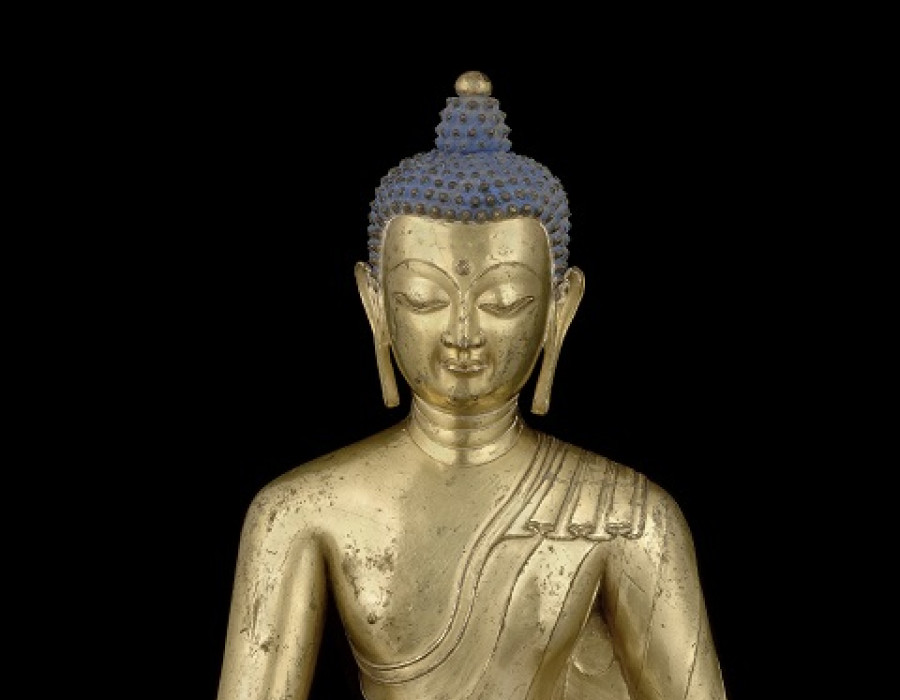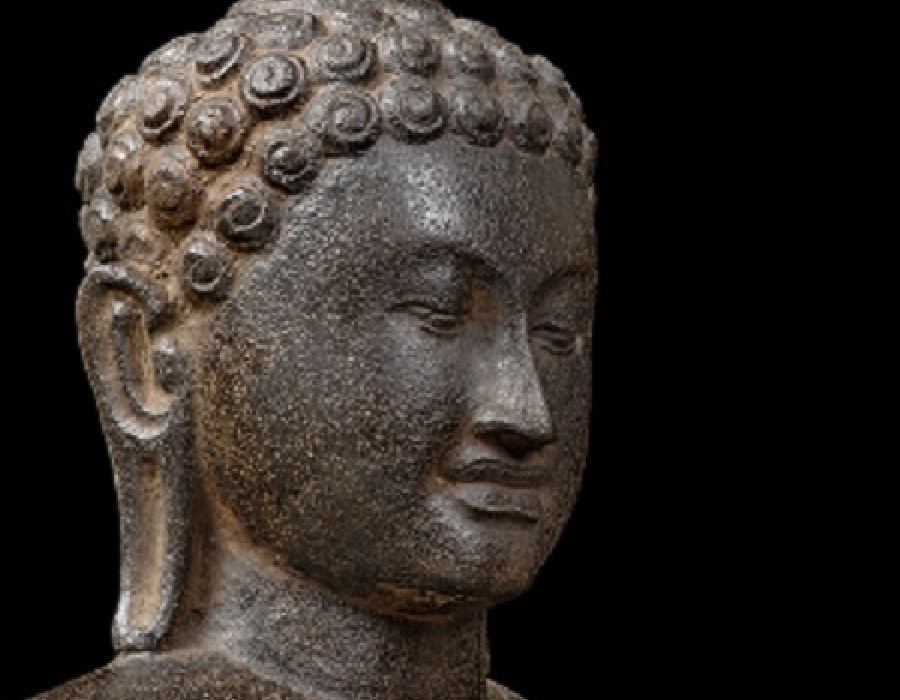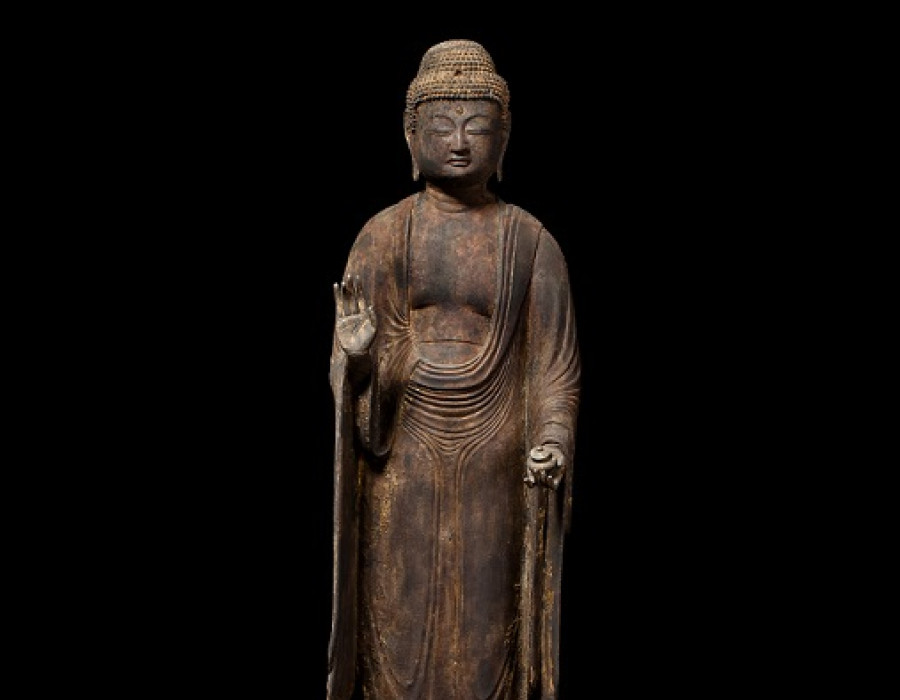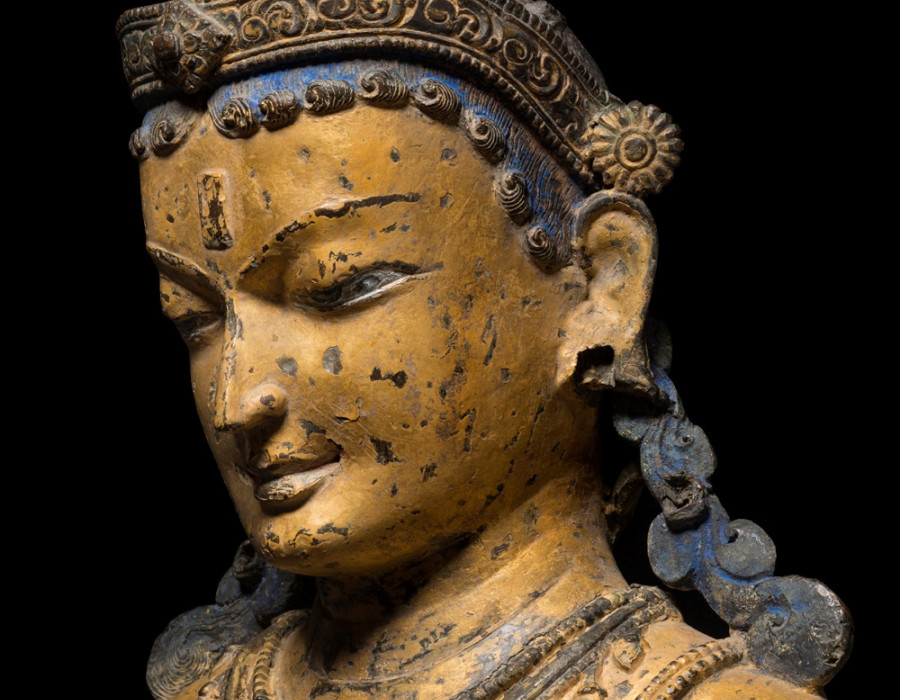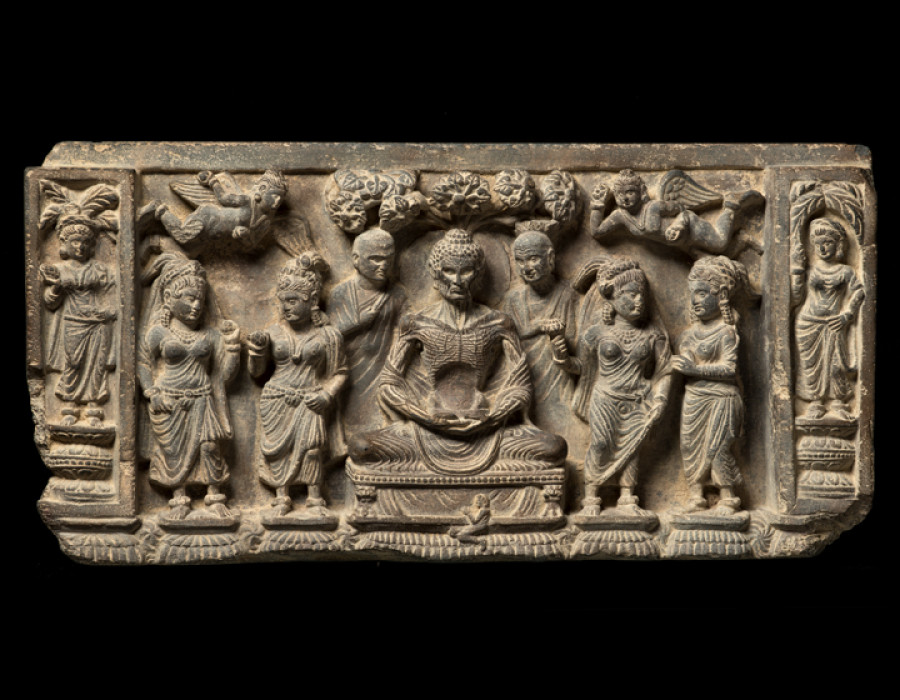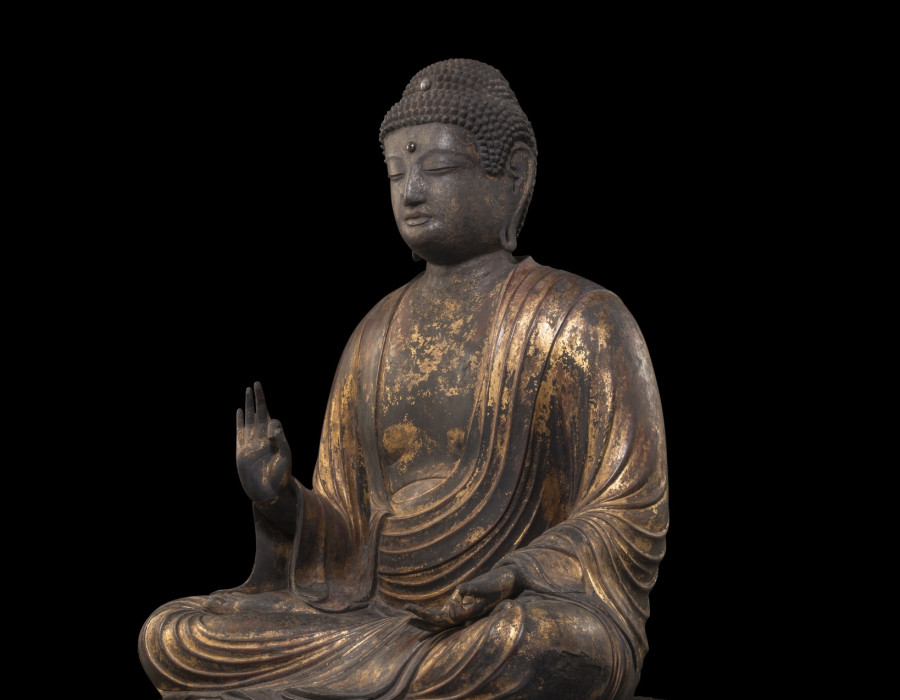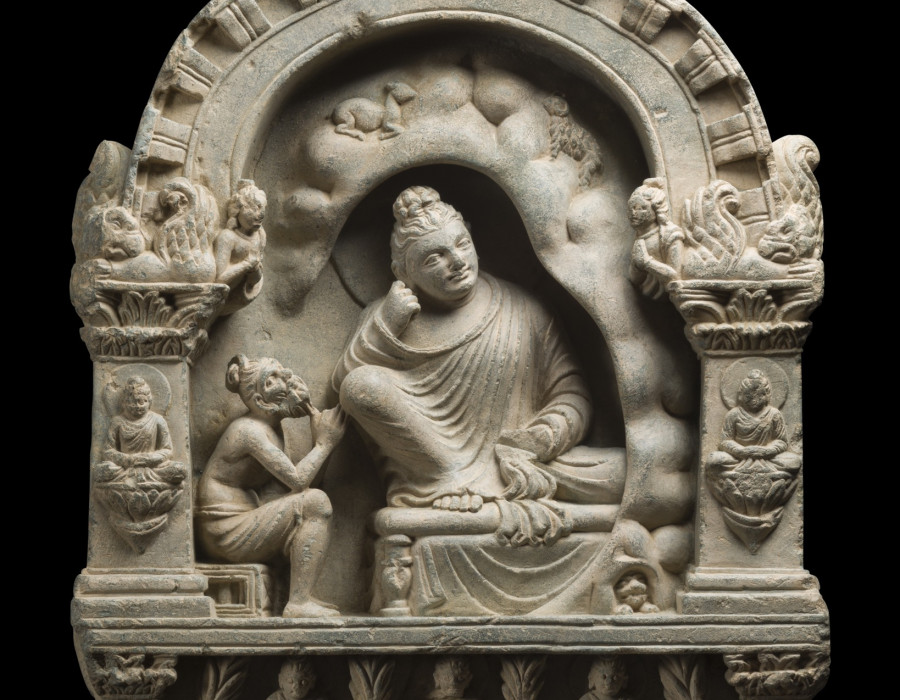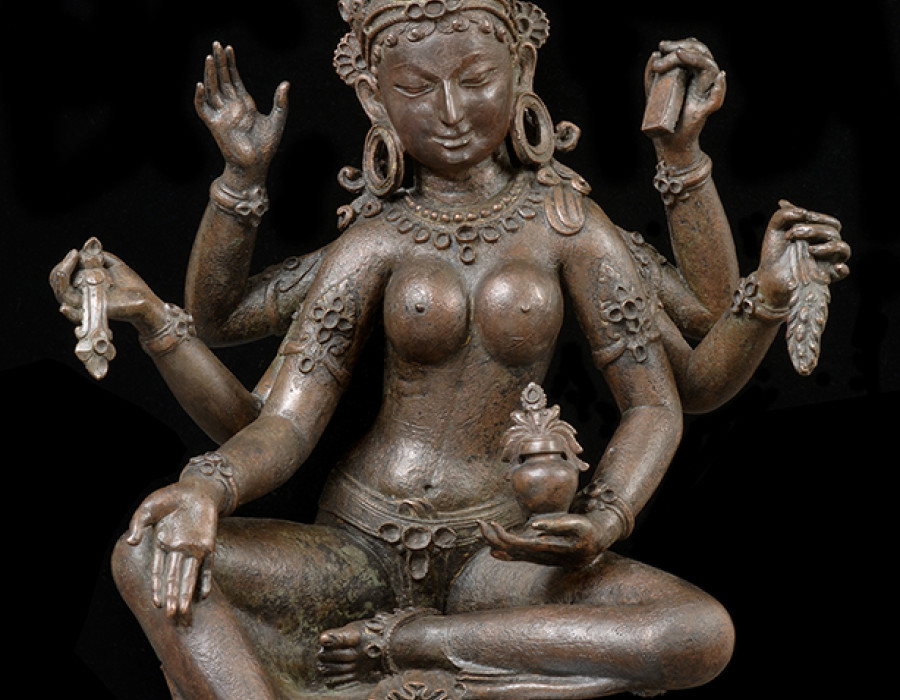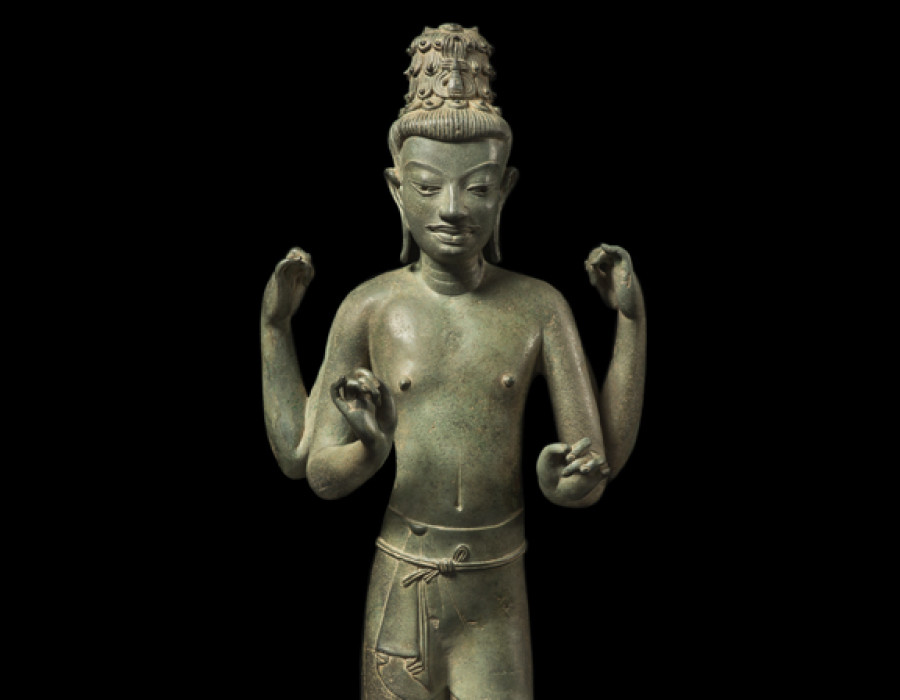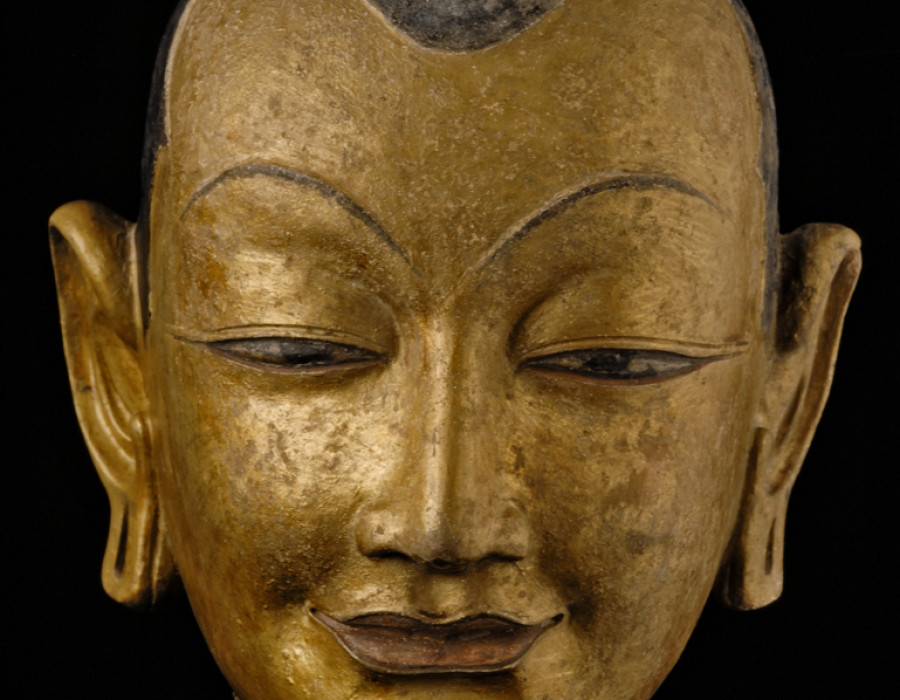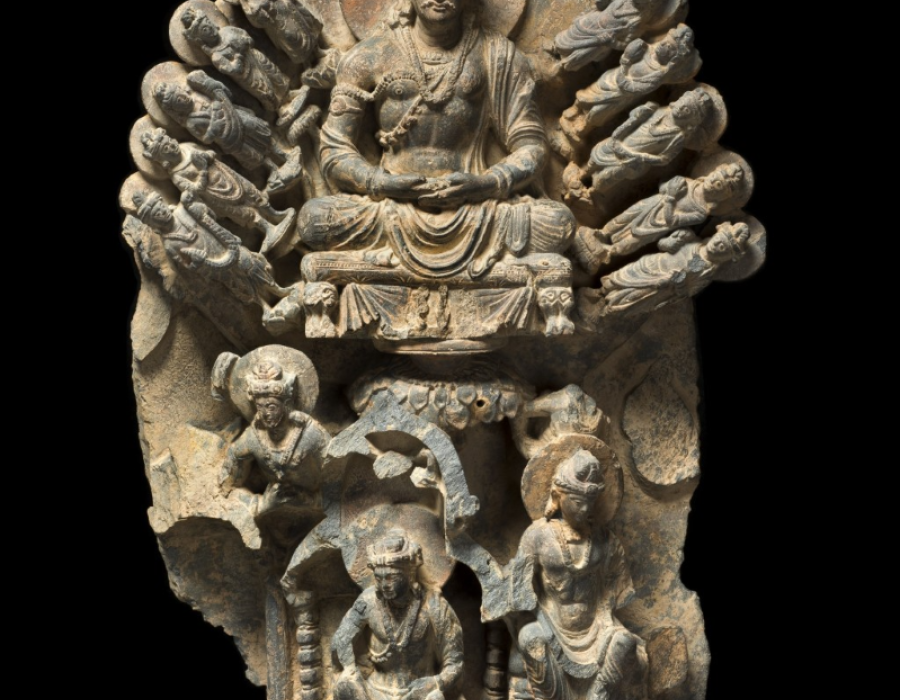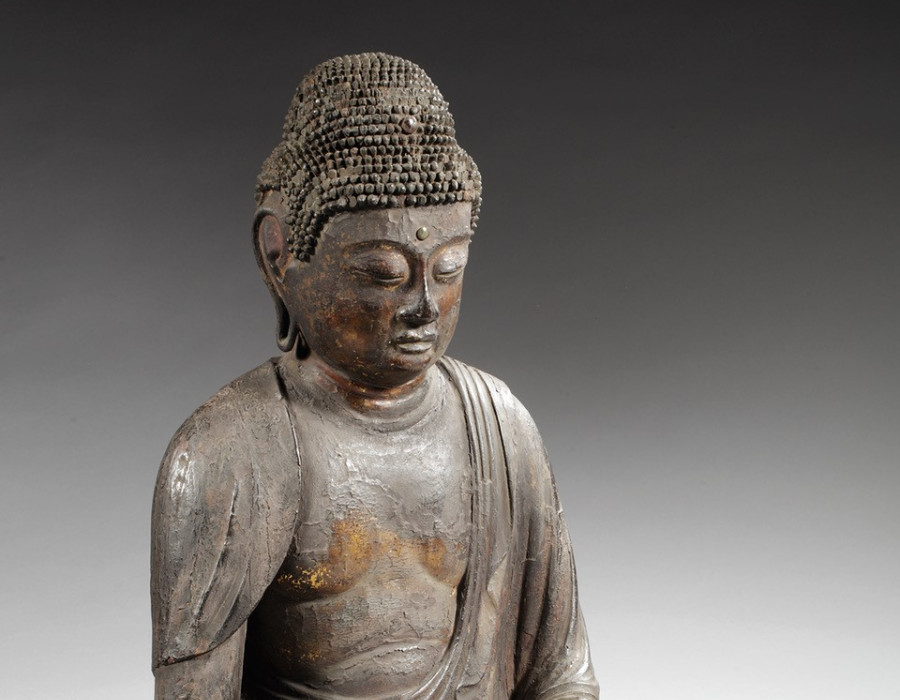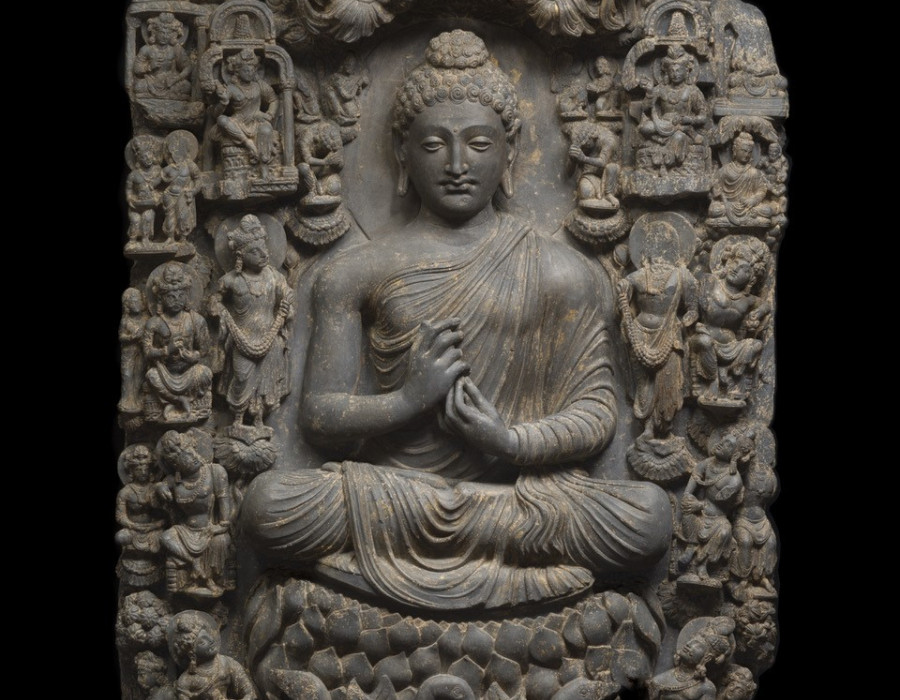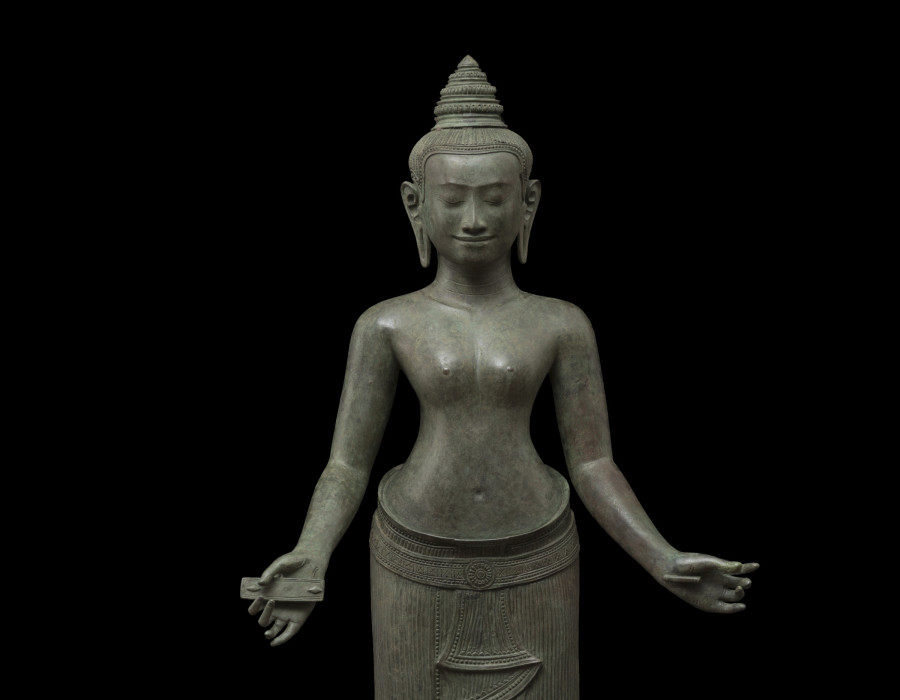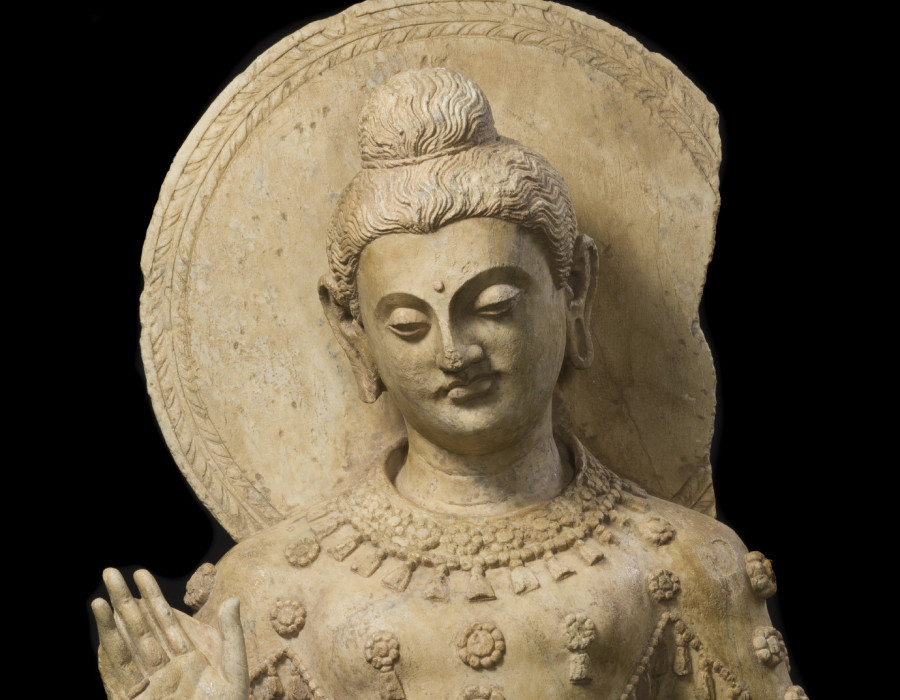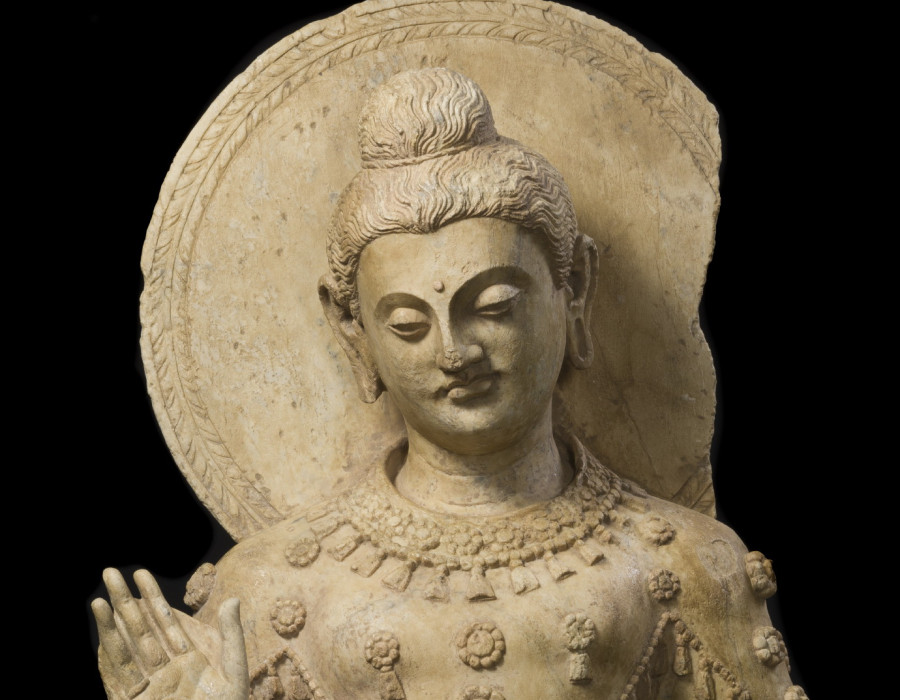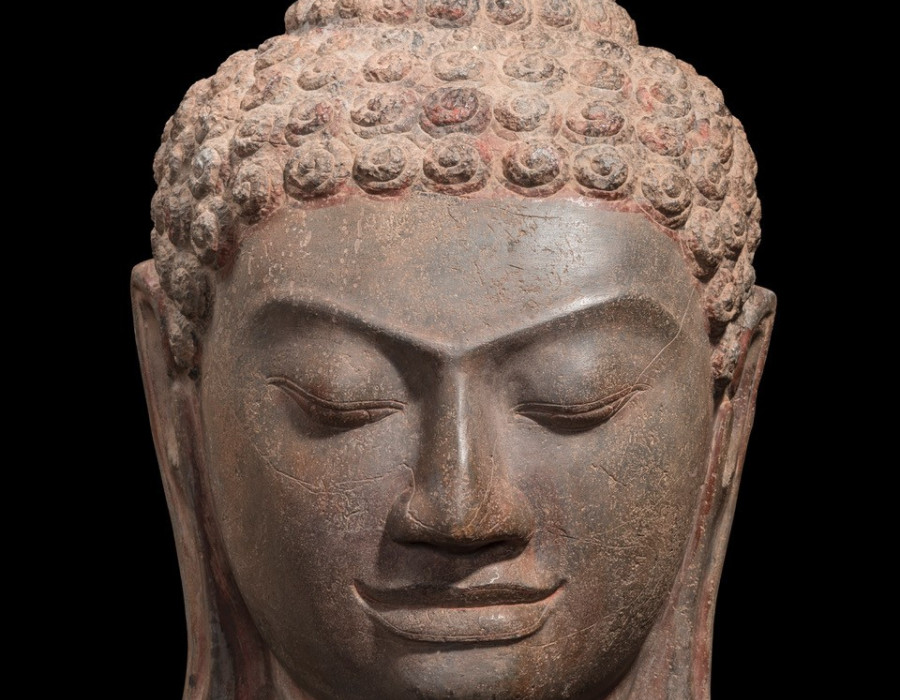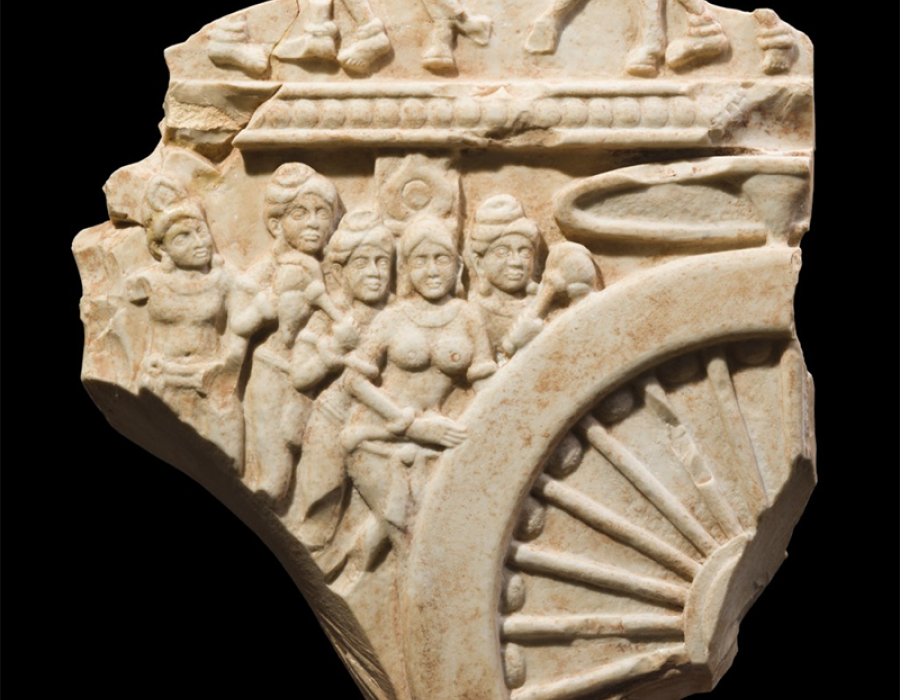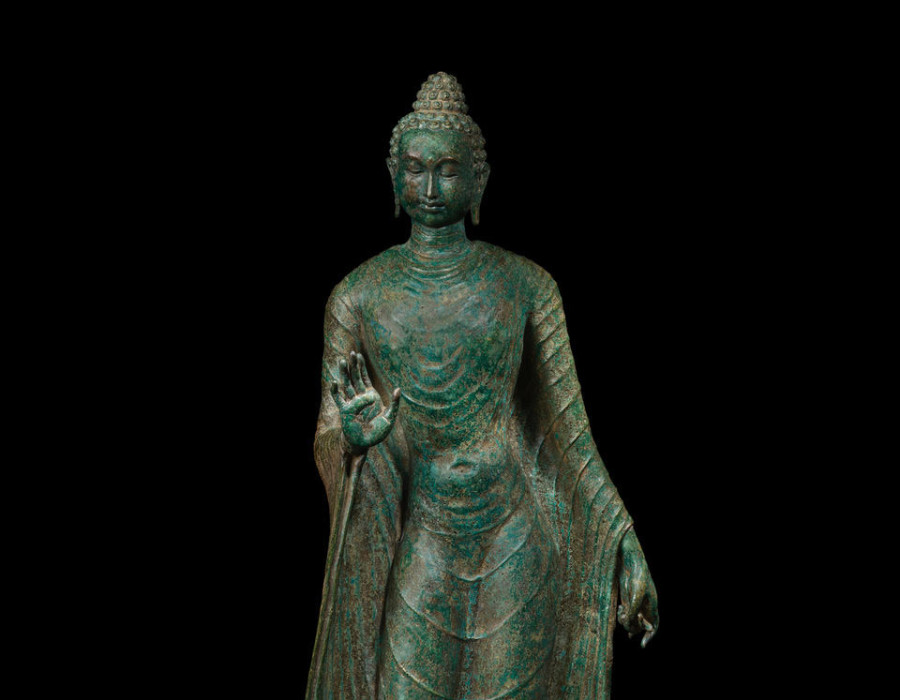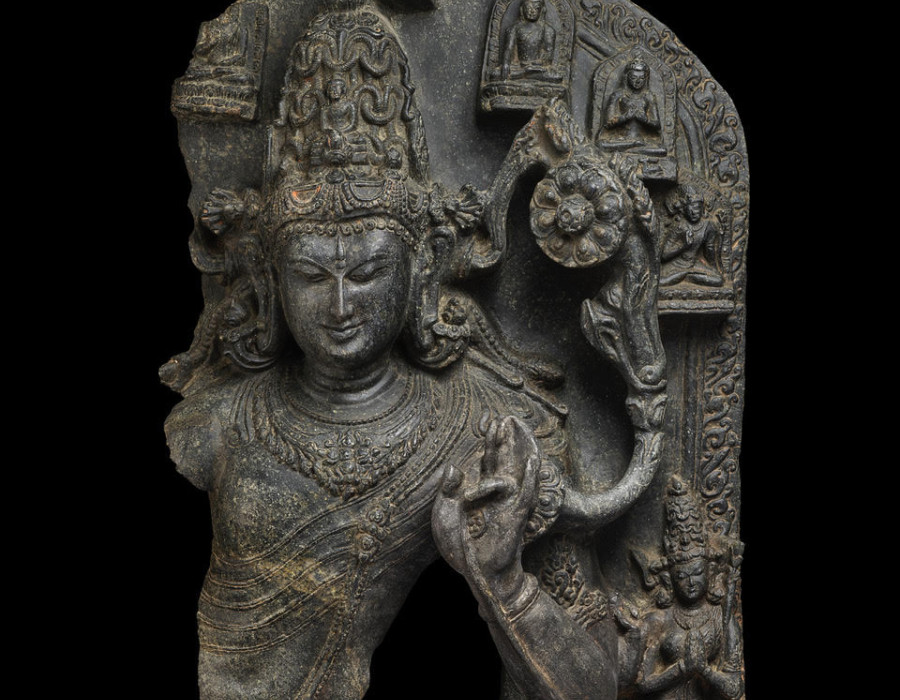
Martin Goodson
Images of Truth: The Goddess Vasundhara, 11th century Nepal
Images of Truth
Magical powers, Devas and bodhisattvas expound the Dharma in this week's images of truth.
.jpg)
11th century Goddess Vasundhara
John Eskenazi
The Buddhist goddess Vasundhara (or Vasudhara) is a particularly popular deity in the Kathmandu Valley, Nepal, where she is associated with good fortune and abundance. Vasundhara is identified by the sutra, rice stalk and vase held on her left side. On her right she offers Varadamudra and holds a jewel pouring jewels. The sixth hand, raised beside her right ear indicates music or singing, possibly melodies that accompany rituals performed in her honour. This lovely sculpture dates from the 11th century, a turbulent political period for the Kathmandu region but despite that, a time of great architectural and sculptural artistry.
Extract from ‘The Holy Teaching of Vimalakirti. Tr. Robert Thurman Copyright 1976, The Pennsylvania State University
“Thereupon, a certain goddess who lived in that house, having heard this teaching of the Dharma of the great heroic bodhisattvas, and being delighted, pleased, and overjoyed, manifested herself in a material body and showered the great spiritual heroes, the bodhisattvas, and the great disciples with heavenly flowers. When the flowers fell on the bodies of the bodhisattvas, they fell off on the floor, but when they fell on the bodies of the great disciples, they stuck to them and did not fall. The great disciples shook the flowers and even tried to use their magical powers, but still the flowers would not shake off. Then, the goddess said to the venerable Sariputra, "Reverend Sariputra, why do you shake these flowers?"
Sariputra replied, "Goddess, these flowers are not proper for religious persons and so we are trying to shake them off."
The goddess said, "Do not say that, reverend Sariputra. Why? These flowers are proper indeed! Why? Such flowers have neither constructual thought nor discrimination. But the elder Sariputra has both constructual thought and discrimination.
"Reverend Sariputra, impropriety for one who has renounced the world for the discipline of the rightly taught Dharma consists of constructual thought and discrimination, yet the elders are full of such thoughts. One who is without such thoughts is always proper…”
“… Sariputra: Goddess, what prevents you from transforming yourself out of your female state?
Goddess: Although I have sought my "female state" for these twelve years, I have not yet found it. Reverend Sariputra, if a magician were to incarnate a woman by magic, would you ask her, "What prevents you from transforming yourself out of your female state?"
Sariputra: No! Such a woman would not really exist, so what would there be to transform?
Goddess: Just so, reverend Sariputra, all things do not really exist. Now, would you think, "What prevents one whose nature is that of a magical incarnation from transforming herself out of her female state?"
Thereupon, the goddess employed her magical power to cause the elder Sariputra to appear in her form and to cause herself to appear in his form. Then the goddess, transformed into Sariputra, said to Sariputra, transformed into a goddess, "Reverend Sariputra, what prevents you from transforming yourself out of your female state?"
And Sariputra, transformed into the goddess, replied, "I no longer appear in the form of a male! My body has changed into the body of a woman! I do not know what to transform!"
The goddess continued, "If the elder could again change out of the female state, then all women could also change out of their female states. All women appear in the form of women in just the same way
as the elder appears in the form of a woman. While they are not women in reality, they appear in the form of women. With this in mind, the Buddha said, 'In all things, there is neither male nor female.'"
Images of Truth
Buddhist art and iconography

